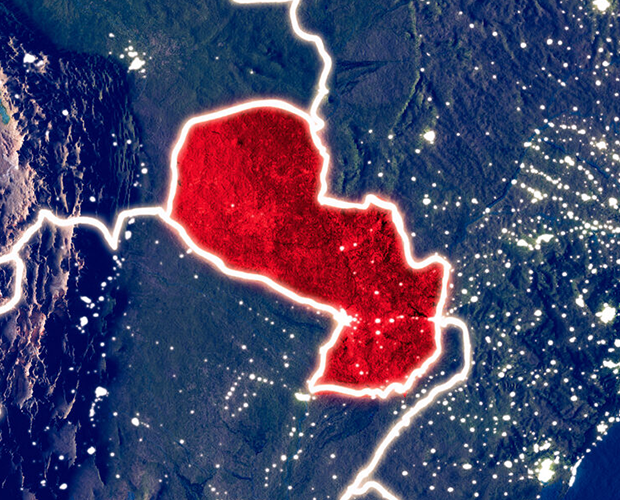Using nightlights as a measure of economic activity
March 31, 2022 | GPS News

What does an area’s Gross Domestic Product (GDP) have to do with keeping the lights on at night?
According to a new paper in Remote Sensing, coauthored by UC San Diego School of Global Policy and Strategy (GPS) alumnus Mario Rodriguez-Heredia ‘21 and associate teaching professor and associate dean Gordon McCord, the two are more closely intertwined than you might think.
“The U.S. expends a lot of effort measuring activity at the state and county levels because the government wants to know where the growth is – and why some places are growing faster than others,” McCord said. “But in many countries around the world, officials don’t have the resources to monitor economic activity on a subnational level.”
This poses a problem for countries working to meet the Sustainable Development Goals (SDGs), adopted by all 193 members of the United Nations in 2015, as 18 of the SDG indicators require having subnational estimates of GDP.
So McCord and Rodriguez-Heredia, a Master of Public Policy (MPP) graduate, began to consider innovative methods for estimating economic activity. Their idea? Use nightlights imagery from the Visible Infrared Imaging Radiometer Suite’s Day-Night Band (VIIRS-DNB) and data from neighboring countries to estimate an area’s economic activity – a crucial step in making policy corrections to meet the SDGs.
Rodriguez-Heredia, who worked as a research assistant at GPS’ SDG Policy Initiative before graduating, utilized the most cutting-edge technology and methods from academic literature – which he learned in McCord’s Remote Sensing course – to help complete the study. This was his first time submitting to an academic journal.

“One of the most important takeaways is being fully transparent about your methods and process to allow future replications,” Rodriguez-Heredia said. “I also realized that knowledge-building is a team effort, involving many researchers contributing from multiple fronts to answer similar pressing questions. Every publication is just a building block in this process.”
The article was part of a special edition of the journal focused on monitoring achievement of the SDGs. McCord commended Rodriguez-Heredia’s ability to deploy cutting-edge tools and then frame the results for an academic audience, while keeping in mind the broader contribution of the work.
“From the beginning, I knew this was something Mario and I would do together,” McCord said. “He’s a very creative and technically strong graduate of GPS, and with minimal guidance he executed a lot of ideas and added his own. It went beyond just taking instruction; he was adding intellectually to the pursuit.”
Rodriguez-Heredia now works as a consultant for the Sustainable Development Solutions Network (SDSN), where he helps governments develop policies to achieve the SDGs. Monitoring the SDGs, he said, is key to identifying where the targets are that societies are still missing.
“Country-level indicators may hide subnational gaps showing regional differences. Therefore, subnational-level data are essential to understand different development trends within a country,” Rodriguez-Heredia said. “In this sense, the paper is related to my career since we show the potential of using nontraditional data sources to estimate subnational economic activity and understand such trends.”
McCord emphasized that for students interested in research, they should join a faculty member’s research team and take advantage of the technical training unique to the school’s programs and curriculum. Currently GPS offers four certificate programs, including one in spatial analysis and another in quantitative methods.
“This is what students who want a career in research should be doing during their time at GPS – learn how the research process works. Learn best practices. Learn how to fail with an idea and pivot to a new one,” McCord said. “This paper is the kind of contribution a GPS graduate can ultimately produce, which is such a clear demonstration of the added value of our rigorous programs.”
Rodriguez-Heredia said he felt very proud to see their efforts turned into an interesting paper and that it was very gratifying to contribute to a stimulating research agenda.
“It was fascinating to witness how an idea becomes something tangible and hopefully useful,” he added.

